Botox For TMD
5 Questions You Should Ask Before Getting Botox for Your TMJ Problem

Temporomandibular disorder (TMD) affects the jaw joint and muscles responsible for jaw movement. If you’re considering Botox as a treatment, it’s important to ask the right questions to make an informed decision. Here are five questions to guide you:
1. Is Botox a cure for TMJ disorder?
No. Botox is not a cure and it’s not considered a first-line treatment for TMD. This condition can be caused by several factors—underlying sleep apnea, muscle tension, jaw injury, teeth grinding, or arthritis—not by a Botox deficiency. While Botox may help some patients manage symptoms, it does not address the root causes of TMD.
2. Do I Have an Accurate Diagnosis of My TMD Condition?
Before considering any treatment—including Botox—it’s essential to make sure you have a precise diagnosis. Terms like “TMJ” or “TMD” are umbrella labels used to describe a wide range of conditions affecting the jaw joint and surrounding muscles. In reality, there are several distinct disorders that can cause similar symptoms, such as:
- Retrodiscitis (inflammation behind the joint disc)
- Disc displacements (with or without reduction)
- Temporal tendonitis
- Myofascial pain dysfunction or muscle trigger points
- Degenerative joint disease
- Ernest Syndrome
- Myalgia in the temporalis or masseter
Each of these conditions requires a different treatment approach. For example, muscle-based pain might respond well to trigger point therapy or Botox, while joint damage or disc displacement may need a completely different strategy. Without an accurate diagnosis, even well-intended treatments can be ineffective—or make things worse. That’s why a thorough evaluation by a qualified provider is the first and most important step.
3. When should Botox be considered?
Botox is sometimes used when other treatments haven’t provided enough relief. It works by temporarily relaxing the jaw muscles, which may reduce pain and improve function. Some studies show modest pain relief, but the results are usually temporary. In some research, Botox didn’t perform any better than a placebo.
4. What are the risks of using Botox for TMD?
While serious side effects are uncommon, Botox isn’t risk-free. It can weaken the jaw muscles, making chewing more difficult for a period of time. That’s why it’s important to weigh potential benefits against possible side effects, especially since the improvements in pain are often small and short-lived.
5. What do experts recommend?
Experts generally advise trying conservative treatments first, because they are low-risk and often effective. If those don’t work, Botox may be an option—but only after a careful conversation with your provider about the pros, cons, and expectations.
Botox is not a magic fix for TMD, but it may play a role in symptom management for some people. At Better Sleep Mid-Ohio Valley we prioritize getting an accurate diagnosis, and building a personalized treatment plan for you. Botox is one of the many tools that we have in our toolbox.
Further Reading
- Effect of Botulinum Toxin Type a on Muscular Temporomandibular Disorder: A Systematic Review and Meta-Analysis of Randomized Controlled Trials.
Li K, Tan K, Yacovelli A, Bi WG.
Journal of Oral Rehabilitation. 2024;51(5):886-897. doi:10.1111/joor.13648. - The Effectiveness of Botulinum Toxin for Temporomandibular Disorders: A Systematic Review and Meta-Analysis.
Saini RS, Ali Abdullah Almoyad M, Binduhayyim RIH, et al.
PloS One. 2024;19(3):e0300157. doi:10.1371/journal.pone.0300157. - Effect of Botulinum Toxin on Masticatory Muscle Pain in Patients With Temporomandibular Disorders: A Randomized, Double-Blind, Placebo-Controlled Pilot Study.
Kim SR, Chang M, Kim AH, Kim ST.
Toxins. 2023;15(10):597. doi:10.3390/toxins15100597. - Botulinum Toxin Type a for Painful Temporomandibular Disorders: Systematic Review and Meta-Analysis.
Machado D, Martimbianco ALC, Bussadori SK, et al.
The Journal of Pain. 2020 Mar – Apr;21(3-4):281-293. doi:10.1016/j.jpain.2019.08.011. - Clinical Benefit of Botulinum Toxin for Treatment of Persistent TMD-related Myofascial Pain: A Randomized, Placebo-Controlled, Cross-Over Trial.
Sitnikova V, Kämppi A, Kämppi L, et al.
Pain Practice : The Official Journal of World Institute of Pain. 2024;24(8):1014-1023. doi:10.1111/papr.13396. - Botulinum Toxin and Percutaneous Needle Electrolysis for the Treatment of Chronic Masticatory Myalgia.
Gonzalez-Perez LM, Vera-Martin R, Montes-Latorre E, Torres-Carranza E, Infante-Cossio P.
Toxins. 2023;15(4):278. doi:10.3390/toxins15040278. - Comparative Effectiveness of Botulinum Toxin, Low-Level Laser, and Ultrasound for Temporomandibular Disorders.
Geçkil N.
Alternative Therapies in Health and Medicine. 2025;:AT11429. - Long-Term Effects of a Single Application of Botulinum Toxin Type a in Temporomandibular Myofascial Pain Patients: A Controlled Clinical Trial.
De la Torre Canales G, Câmara-Souza MB, Poluha RL, et al.
Toxins. 2022;14(11):741. doi:10.3390/toxins14110741. - A Systematic Review of Botulinum Toxin in the Management of Patients With Temporomandibular Disorders and Bruxism.
Patel J, Cardoso JA, Mehta S.
British Dental Journal. 2019;226(9):667-672. doi:10.1038/s41415-019-0257-z.
Take the First Step to Better Sleep
If you’re ready to get the restful sleep you deserve, it’s time to speak to one of our sleep professionals. Our team will work with you to create a personalized treatment plan that fits your specific needs. If you’re still unsure, take our short sleep quiz that identifies the most common sleep-related issues to see which ones you’ve experienced.
